The portrait of Abraham Lincoln arrived yesterday from America. Unlike much of unframed portraiture, it did not arrive rolled up, but flat, ready for framing. The portrait is a dark image of Lincoln, with a red tear falling from his right eye. This red drip became a widened red smudge over his shirt and bow tie. There is a red drop on his left cheekbone – a weeping stigma for a country that lost its nobility for four years.

This is not the Lincoln of the Washington Memorial, a commanding white seated statue carved in Georgia marble which, as one approaches it, becomes increasingly dominant.
This is a dark image.
The portrait is subdued as if located in the depths of American despair, the expression more sad than horrified, shedding a tear for his country. America is used to carpetbaggers and within the list of undistinguished Presidents, there have been the usual complement. Before Trump, Warren Harding was generally agreed as the worst President by the level of corruption which blossomed during his tenure, cut short by his death before completion of his first term. When all the details of Trump’s machinations come forward, some of which may have to wait until he dies, then Warren Harding will probably appear to have been overseeing two-bit chiselling.
A day after I received the portrait, this terse comment came by email from a Lincoln Project operative:
“The line between what America should be and what the dangerous edge of a radical anti-American movement wants us to become has never been clearer.
Our mission is to defeat the sick, poisonous ideology of a growing authoritarian movement and expose the co-conspirators, enablers, and funders for their attempts to destroy American democracy.
This is what we have (to do to) stop Trump’s return; McConnell’s Senate takeover; McCarthy’s retaking the house.
It’s all on the line. This is the mission.
Because if they win, America ends.”
The Lincoln Project was founded in early 2020 to go after Trump. The core were all Republicans, who had been linked to senior Republican Party figures, carnivorous apparatchiks united in their distaste of Trump. They were certainly not idealists as more recent revelations have shown. Nevertheless, they are important players in the Republican movement, as long as they survive the questions being recently raised by the Trumpians against some of their founding members.
As The New Yorker stated in an article just before the Presidential election in October last year about the purpose of the Project:
“Republicans have always invoked their connection to Abraham Lincoln, the Party’s first President; the Project sought to weaponize it. On February 27th, several of the founders appeared at Cooper Union, in the East Village, where, in 1860, Lincoln delivered an address that urged the containment of slavery and the preservation of the Union, propelling him to the Presidency. His speech began with “the facts”; in his conclusion, he said, “Let us have faith that right makes might.” Exactly a hundred and sixty years later, Wilson (one of the Project founders) stood at the same lectern that Lincoln had used and invoked a tough-guy monologue from the vigilante movie “Taken”: “We have, as the great political philosopher Liam Neeson once said, a particular set of skills—skills that make us a nightmare for people like Donald Trump.”
I made a trip to the United States in 1977, after the American public had unexpectedly elected Jimmy Carter, and when there was a wholesomeness about American politics trying to scrape away the Nixon Legacy.
There I met senior members of the Ripon Society, named for the place in Wisconsin where the Republican Party commenced. This Society had been the first element within the Republican Party that came out in support of the civil rights movement in 1962. In 1977, it then was still differentiated from the neoliberal approach with which the gradual rise of Reagan was beginning to dominate the Republican Party. They had been in the vanguard of rejecting Barry Goldwater and his zeal in wanting to privatise everything, even the Tennessee Valley Authority, and his view on “law and order” as a means of suppression rather than protection of civil rights. Goldwater did not go so far as to encourage mob rule and the disintegration of the American polity, but he was the harbinger of it. Thus, the mildly progressive utterances of the Ripon Society within the Republican Party were overwhelmed – drowned.
The Lincoln Project is not a rebirth of the Ripon Society. The Project may say something about policy, but it is focussed on attacking Trump.
As an example of the “attack dog” approach, quoting again from The New Yorker, “The Project’s strategists metabolize news quickly enough to create spots within hours, or even minutes, of an event. In June, after Trump timidly descended a ramp at West Point, and struggled to lift a drinking glass to his mouth, the Project combined footage of the appearance with other videos of him looking feeble, and released “#TrumpIsNotWell”. The viral spot subjected the President to one of his own tricks: he mocked Hillary Clinton when she stumbled in 2016, and constantly suggests that Biden is senile. Trump was soon wasting time at a campaign rally defending his ability to walk and to drink water.”
These are thus disaffected Republicans with all the tools in trade. They have powerful friends in the Republican Party that existed before the Trump takeover and are now isolated by the populist lumpenproletariat that is the Republican base, for now.
These Lincoln Project guys are no idealists, no saints, and the recent concentration on its leading figures suggests that some of its leaders have unsavoury pasts, to say the least.
One is an alleged paedophile; and two of the other funders have been accused of siphoning money from the Project into the business. If this is so, then it reveals a systemic problem in the Republican side, whether pro or anti-Trump. The Lincoln Project notwithstanding has fought back against the allegations, and there is an accusation following an “independent” review of the truth of the above that there is an underlying smear campaign being mounted by Trump allies.
The battle rages. The Lincoln Project videos tear at the kleptarchy heart of Trump and his allies. Some ask, why persist, since Trump no longer has the real levers of power to endorse his ongoing criminality? The Lincoln Project disagrees in a mixture of above and below the belt rhetoric. The possibility of The Project being an electoral spoiler for Trump must give him a great degree of concern.
It ain’t pretty, but then neither was the storming of Democracy that occurred on January 6 in Washington.
Whyalla?
When I first heard about Sanjeev Gupta and his plan to be the saviour of Whyalla, I then expressed doubts to my wife. She looked at me, having read a distillation of his recent antics, and said my comments four years ago were hardly that mild.
Yet Gupta secured a promise from the previous South Australian government for $50 million which, in the grand scheme promulgated by Gupta, is “bugger all”, except that it was taxpayers’ money. Gupta was juggling a billion dollar commitment underpinned by Credit Suisse both through Greensill financing and directly to revamp the Whyalla steelworks, the biggest employer in the city.
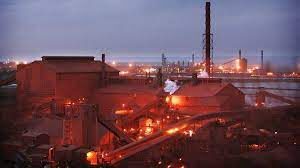
Now four years on, Greensill is being investigated for fraud and in the words of the Financial Times, Credit Suisse was “not willing to accommodate its once highly valued client”, namely Gupta. Increasingly he is running out of friends, but continues to press the Government for a guarantee to raise further funding.
Gupta is in deep, and the question is, will the South Australian government give him a paddle? Government, having been sucked in, is probably trying to extricate itself from the labyrinth, but to save face may just be tempted to throw more money into the project “to save jobs”. It would not be the first time that private enterprise has milked money for governments with this type of blackmail. The one saving grace may be that it was a different government – a government of the workers – which provided the initial offer of $50 million. But it is not that long ago that car manufacturers walked away with billions of dollars having promised to save jobs in that industry; South Australia was right in the middle of this fiscal misadventure.
Gupta is one of those charismatic characters who obviously speaks with honeyed tones, played on an ostentatious lifestyle. He has made a habit of acquiring tired steelworks in rust bucket cities around the world. There is always the promise to renew, to resurrect, to restore – and politicians, seeing their constituency vanish or turn against them, become Canutes. They build flimsy walls of paper – subsidies, grants, favourable legislation, which inevitably dissolve in the face of superseded need and technology.
Unfortunately, we have a political culture of survival of the dim-witted corrupt lulled by a torrent of subcontinental sweet talk. It is so easy to take the perks and do nothing except to pray with a forest of outstretched arms that nothing will happen, and all this change will just go away in some miraculous rapture.
Whyalla should start reinventing itself. After all, it has lost its ship building industry and the future of the steelworks is perilous – some would say on life support. The iron ore mined locally to feed the steelworks is low grade magnetite and, in a country which produces nearly 800 million tonnes a year, these mines in South Australia contribute only 10 million tonnes.
Whyalla lies on the Eyre peninsula, an inverted triangular zone bordered by Spencer Gulf and the Southern Ocean. It is a wonderfully diverse area. From these surrounding waters over 60 per cent of Australia’s seafood catch comes. On land there is both an arid and arable zone; below the meandering yet accurate Goyder Line, the predictor of mean rainfall, divides saltbush from wheat.
Whyalla is saltbush.
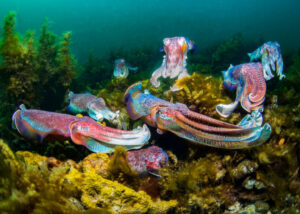
Yet Whyalla was originally constructed as a port, and near an iron ore deposit, once considered significant now dwarfed by the Pilbara.
It has a uniqueness – it just happens to be where the ever-changing coloured giant cuttlefish are best seen for three months each year as they mate. Spencer Gulf may not be the Great Barrier Reef, but it has a sea profile populated with exotica – the blue groper and sea horses, as well as the giant cuttle fish – that renders it an attraction for snorkelling, recreation, tourism. At the same time it is able to exist alongside the commercial seafood industry, from oysters to the tuna found in the waters off its Southern coast. Inevitably there are tensions been ecology and pelagic farming.
In other words, between the two, with fish farming now bruited in the Gulf, Whyalla has other ways to survive Gupta.
At present there seem to be no such problems with Queensland politicians about supporting an outdated industry. The challenge is to differentiate the short term gain from long term pain. But coal is a major constituent of steel manufacture and steel manufacture worldwide has increased by 15 per cent in the past year.
It was 11 years ago that Adani came calling into the Queensland Galilee Basin, and life has changed, so much so that it is rumoured the coal from these mines is to be used in the manufacture of plastics – not steel.
The price of the Adani mines will be the water table in Central Queensland. Ironically, like the pub with no beer, Adani-sourced PVC pipes may have no water. Before that, Adani will make sure that Central Queensland is sucked dry in the pursuit of this coal for plastics. In the end, will Adani prove the Queensland answer to Mr Gupta – or worse?
Gupta has been stopped in his tracks, so Whyalla can now take a good look at its future. The “more jobs” rhetoric is vanishing in a pile of debt and unfulfilled promises. Adani has already adopted the same public relations approach in relation to the number of jobs being created in Central Queensland.
I first went to Moranbah not that many years after it had been established as a custom-built coal mining town south-west of Mackay, in the Isaac Region. Two comments struck me that I still remember: this would be the last mining town built in Queensland by a mining company; and that the newness of the town was reflected by the fact that it was yet to get its first interment. Over the years, Moranbah has kept a stable population. The cemetery is no longer pristine. There is nevertheless the need to assess here and elsewhere the number of the fly in; fly out (FIFO) miners.
The problem with assessment of the FIFO number is that counting only relates to the number on a shift at any one time, and hence the total number may be underestimated. This is the Adani constituency and, by extension, the National Party coal lobby. It is overwhelmingly male.
The population centres, which reflect the families who have settled in these small coal mining settlements, while not universal, still tend to vote for the ALP, but their vote is dwarfed electorally. The point is that a review of the voting patterns in the last Federal election shows these townships in the coal mining areas of Queensland did not uniformly vote for the Coalition.
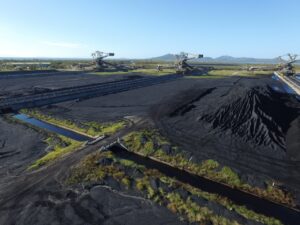
The Galilee basin is sparsely populated. Mining here is not going to lead to any permanent population shifts, especially when in the future there is no potable water available. It took four years for Gupta to unravel in Whyalla; how long will it take the Adani coal promise to unravel into stacks of coal unable to be sold; and which, by 2050, nobody will want, just another pollutant industry.
An Opportunity Missed
The objective of Hotel Quarantine is to prevent the spread of the virus from any arriving traveller who is infected into the wider community. The design, management and delivery of quarantine services is therefore critical to the achievement of this objective. However, the current system does not balance or calibrate all risks nor take decisions informed by absolute or relative risk (for example, exemption categories, transit passengers, airline crew, and the impact on people in quarantine). Report on National Review of Hotel Quarantine
Jane Halton is adroit. She conceals any inadequacies under a haughty aggressive exterior.
She is an exemplar of the person “who knows where the keys to the executive toilet are”. This art is reflected in the report she wrote on hotel quarantine – one eye on the politicians and above all one on her own skin.
It is not that the Report was badly written, but it says what her political bosses wanted her to say. It reads like a manual, listing “do’s and don’ts”, interspersed with jargon “quarantine journey”, “continuous improvement” and convoluted sentences (which reflect lack of editing) “Approaches to balancing or managing relative risk in a measured way…”
The following illustrates the unhelpful nature of the Report:
With a large number of Australian citizens and permanent residents currently offshore, the need to significantly increase arrival numbers, including for business and agricultural purposes, and the changeability of the COVID-19 situation, consideration should also be given to the establishment and maintenance of a national facility in reserve to facilitate large scale evacuations from international ports, if or when required.
As they say in the classics, “tell me something I don’t know”. No mention of cabins as Malcolm Turnbull has said Halton recommended.
However, it is not the point of this blog to parse this Report, but to highlight the opportunity missed.
October last year was a critical time for an innovative approach for quarantine, providing her with the opportunity to start mapping out a program for national quarantine, outside the hotel and home programs in place then. She did make a last recommendation for “a national quarantine facility” which, if she had thought about it, was completely impractical in a country as big as ours. After all, her involvement in stopping the boat people had given more than a clue as to how to isolate people.
My family were infected by the Virus in early 2020, before hotel quarantine was established, and managed to quarantine at home. Two adults on testing had the Virus; the three children did not. It was a time before any mask wearing policy. They lived in a house with enough space to make social distancing possible, with easy safe access to the outside. The family adhered to a protocol which enabled living in the one house without becoming infected. While the family coped well, it was due to its discipline rather than demonstrating the normal home is constructed for quarantine, any more than the various designated hotels are.
Nevertheless, that family’s experience had some important lessons. The first was the cavalier way the State treated potential carriers of the Virus in the early days, which delayed the diagnosis and caused unnecessary transmission.
The second was once the diagnosis was established, the family had a makeshift environment in which to isolate the infected from the non-infected, yet maintain communication, for instance those isolated knew when to pick up food and other supplies within the house. The house had two separate bathrooms. It all worked over the 14 days and reaffirmed the need to keep people in an area where there was both space and access to outside air. This environment had all the advantages of Howard Springs in suburbia, but clearly everybody does not have the same optimal home environment.
It was thus evident from early on that a facility with easy access to outside air would be the best solution. The initial evacuation of the people from China confirmed that. Halton mentions only the Howards Springs facility (25 kilometres from Darwin) and the air base at Learmonth (1071 kilometres from Perth). She fails to mention Christmas Island, where there was a large facility which had taken a first group of evacuees from China successfully quarantined and then only housed four refugees with a platoon of gaolers.
While it is still fashionable to isolate people in the middle of a city, because of the specious requirement to be close to a major hospital, Halton should have considered whether a custom-built centre should provide either a preventative barrier or a treatment centre or both. To be close to the major teaching hospital suggests that people are confusing this primary role of preventative quarantine centre with a locked down holding facility for Virus sufferers. For me, the expectation is that those requiring quarantine would be predominantly healthy individuals or even the infected having mild symptoms. There is scant information about the number of those infected in quarantine, who require hospitalisation, and of those, who require intensive care. There is nothing to suggest it is other than a very small number.
She sets out a flow chart of the various steps in the current quarantine process, but she does not explore the vulnerability of such a flow chart, where every step introduces a process where something can go wrong – in some cases, catastrophically.
Unfortunately, she used a piece of data which gave the Prime Minister an unreal optimism about the process. “Since implementation of mandatory hotel quarantine, 851 travellers have been diagnosed with COVID-19 during their quarantine period; a positivity rate of 0.66 per cent.”
I have no idea why it takes so long to do anything in this country these days. Maybe it is the problem of a government so immersed in spin and looking after its mates that it has forgotten that the country needs innovative and lateral thinkers. Unfortunately, Halton is not one of those, by a long stretch.
What she should have done was set out options for what standalone facilities should look like. If she had ever gone to Toowoomba, she would have encountered the Wagner brothers. Perhaps because they upended the government’s favourite psittacine spruiker, she was discouraged from investigating the Wagner proposal. I first landed in Wellcamp just after it opened and have returned periodically since. This impressive airport facility shows what can be done by private enterprise and industry, without government handout being the first priority in the developers’ business plan.
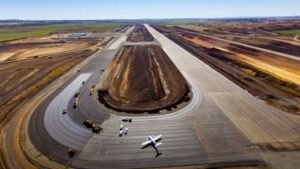
Wellcamp has the capacity of an international airport, as it was designed for large air freighters with the prime purpose of live beef exports. The passenger terminal, while not the size of Sydney or Melbourne, is worthy of any international air terminal. What is equally noteworthy was the amount of land available around Wellcamp.
Having once been directly involved in the Toowoomba health care system, I cannot understand the Prime Ministerial objection about Toowoomba as a site of suitable health care. By contrast, his favoured site – now known as Damascus – was developed by the Americans during WW2 as a defence storage and is now a clapped-out warehouse facility. It is right in the middle of an industrial area of Brisbane next to the old Eagle Farm Airport. So, it is owned by the Commonwealth … but what has that got to do with efficient quarantine arrangements?
If there had been some concern about involving the private sector in fighting COVID-19, selected for being mates rather than expertise, then the platoons of large consultant firms receiving massive contracts have shown that funding of bespoke centres should not be an issue.
The Federal government, without reference to the Halton Report (which is excusable given the lack of consideration given to this option in the Report), seems to have given provisional approval for a Victorian facility near Tullamarine Airport at Mickleham where the Federal Government already has a pet quarantine facility. The lack of urgency and the back-of-the-envelope calculations worries me about whether it will ever be built, given that one could be excused for thinking that the main objective of this government seems to be looking after its mates rather than the community.
If the Halton Report had seriously dealt with this matter, rather than it being a passing comment, then it would have put pressure on the timely establishment of a national network. I advocated in the middle of last year for such facilities to be built, before any vaccines became available.
Now their role is perhaps even more crucial. The speed with which the vaccines have been tested and approved is far different from the conventional approach, where 15 years developing a safe vaccine is not unusual. Here the scientific comment is changing frequently, and while the scientists equipped with the appropriate health dialect may understand what has been happening, the message to the community at large comes out as a jumble of conflicting comments.
However, what the community knows is:
- Social distancing works
- Vaccine works
- Masks work
And above all, border closures work. However, this belief is shaken by breaches in the ad hoc hotel arrangements. When these breaches have caused such significant effects, it just reinforces a need for quarantine facilities where the conditions are reasonable in a self–contained system, with the equivalent of FIFO workers providing a dedicated workforce for a set time on duty and a set downtime off site. Once these are established, then Australia would be able to develop more flexibility in its immigration patterns.
Australia is not going to abandon Virus suppression. It is very much built into the community psyche because of the 2020 success, and the fact that the spread is out of control in Asia provides support for such behaviour. Countries which were held up as paragons such as Taiwan and Singapore are no longer so. The prospect of an infected Japan hosting an event where representatives of various countries with different Virus profiles will gather together in several weeks makes me uneasy, if only for the logistics of the return.
This anxiety would be less if there were dedicated quarantine facilities. The immediate benefit of such facilities would be ease of monitoring 1,000 plus people during the compulsory quarantine rather than their being scattered around the myriad hotels. If the decision is made to house the entire Olympic team at Howard Springs, then that simply confirms the need for that type of quarantine facility. Remember evacuation from Wuhan!
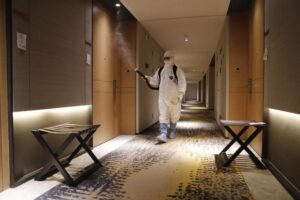
In the longer run, dedicated facilities will make immigration easier, because for the foreseeable future, entry into the country will require two weeks quarantine, especially if that even more transmissible and/or more deadly putative Epsilon to Omega strains emerge.
To me custom built quarantine centres have always been a no-brainer.
You could have done so much, Jane Halton, to engender so much positivity and flair into the policy conversation. But then again that is not your style.
Mouse Whisper
When Dvorak was teaching at the National Conservatory of Music in New York, he insisted that black students be allowed to enrol with no tuition. “The future of this country must be founded upon what are called the Negro melodies,” he declared.
What this quote was referring to was the second movement of Dvorak’s New World Symphony and the choral adaptation “Going Home”. Among the many of those who have sung this, only the great bass, Paul Robeson, has moved this mouse to tears.
Moreover, my fellow mice, of whatever colour you may be, listen to the second movement of this extraordinary work. The melody is played on the cor anglais. I had always thought of Robeson being akin to the bassoon, but so much of his voice is embodied in the warmth and richness which is the cor anglais.
This instrument is not often given the solo role that the Bohemian genius gave here, a genius who perceived the Open Door through which we all shall pass in Going Home – and not just from the New World.

